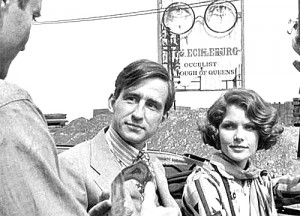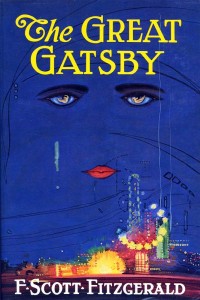My first work in the movies was on The Great Gatsby . It was 1974 and I had just gotten out of college. On the first day of shooting, the producer, David Merrick picked up a chair and threw it against a huge gilt-framed mirror at Nick Caraway’s cottage. The mirror shattered.
The shards missed the three stars – Mia Farrow, Robert Redford, and Sam Waterson.
The point was that David Merrick was tired of shooting the master. He knew it would barely be used in the final picture.
Jack Clayton , the eccentric director and my first boss, had not listened to Merrick, a major Broadway producer. With the sun setting and a shattered mirror ( with no chance of replacing it in a timely fashion) , Jack reluctantly moved on to close-ups.
That night, David Merrick was sent packing from Newport Rhode Island and back to New York.
This mirror became a metaphor. F Scott Fitzgerald’s The Great Gatsby, in my humble view is THE great American novel of the 20th century. Modern Library ranks it number 2 after James Joyce’s Ulysses.
F Scott Fitzgerald‘s masterpiece is a poisonous look at miss-directed aspiration. It reflects the failure of the American Dream, ending in doom and death. The book reads like a moral fable. It’s intoxicating lyrical nature, some of the best in western literature, is attached to a basic romantic delusion.
Whether there were more takes on a master or not, it wouldn’t have mattered. The 1976 over-respectful version of The Great Gatsby was a disaster from the first day of shooting. The resulting picture was beautiful to look at, but flat and passionless. I will never forget seeing it finished for the first time in Westwood, California. It was heart-breaking. There had been so many gifted people on the project. But as Fitzgerald once said about the messy Thomas Wolfe and his staggering achievement of Look Homeward Angel. “Genius is not enough”.

Sam Waterson (Nick) and Lois Chiles (Jordan) drive by Dr.Eckleburg’s mythic billboard (London Location)
Somehow to attribute to The Great Gatsby a photo realism with actors and sets and costumes takes the ephemera out of the myth. It concretizes it and weighs it down, where to date, it has sunk like a jinx. Really, can the toxic metaphor of omnipresent eyes from T. J Eckleburg’s Billboard ever be fully understood in a drive-by shot?
Whether it was the impossibility of adapting F Scott Fitzgerald’s great American novel, or whether or not he was too deep in his cups, Truman Capote, wrote the initial draft of the 1976 Gatsby and it was unusable. A UCLA screenwriter came in and did a basic transfer of the novel to screenplay form. His name was Francis Coppola. It was a solid script but perhaps too respectful.
Baz Luhrmann‘s new version, due out for Christmas 2012, may be an exception. Based on his glittering interpretation of Romeo and Juliet and Moulin Rouge , there is no question his work is outrageous and rebellious. Luhrmann’s excessive trailer for his Great Gatsby includes hip-hop cadence and a jazz age that looks like it was infected with disco. The trailer has created quite a buzz among literary and movie critics. The Luhrman phantasmagoria looks blasphemous. How could anyone do that to Fitzgerald’s canon? Perhaps that’s just the rebellion that’s needed.
I have recently looked at the other versions of Gatsby. There are three others, one is a silent picture in 1926 where very little footage remains. Another starred Alan Ladd. They all are lifeless.
The great American writer, William Faulkner said, “The aim of every artist is to arrest motion, which is life, by artificial means and hold it fixed so that a hundred years later, when a stranger looks at it, it moves again since it is life.”
Could Baz Luhrmann’s outrageous interpretation end the jinx?







